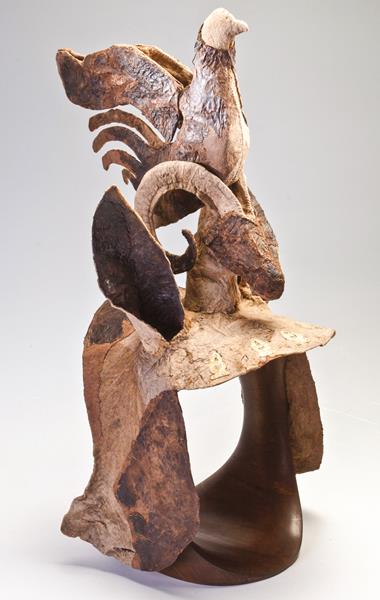
Made of leather, felt and wood, this headgear—designed to be worn by a horse—was discovered among the Scythian burials at Pazyryk in Russia’s Altai Mountains.
Horses played an important role in Scythian society and culture, as both the main means of transportation and the driving force of their military might. The Scythians—a nomadic people known from the ninth century B.C.E.—were feared and admired for their horsemanship and prowess in war.

This mask, dated to the late fourth to early third century B.C.E., is decorated with a ram’s head, cockerel and fish. Placed in a warrior’s burial, it likely adorned the deceased’s horse. The Scythians believed that headgear transformed horses into mythical creatures, such as griffins, that would carry their riders into the afterlife.
Currently on display at the British Museum as part of the exhibit Scythians: Warriors of Ancient Siberia, the headgear can normally be seen at the State Hermitage Museum in St. Petersburg, Russia.
Already a library member? Log in here.
Institution user? Log in with your IP address.

